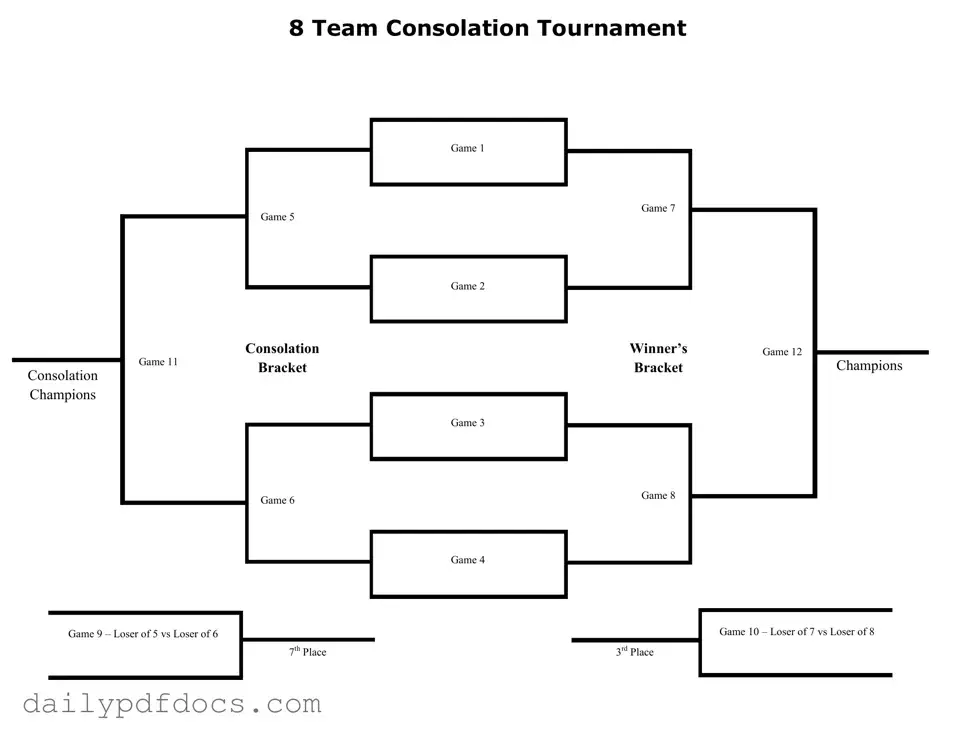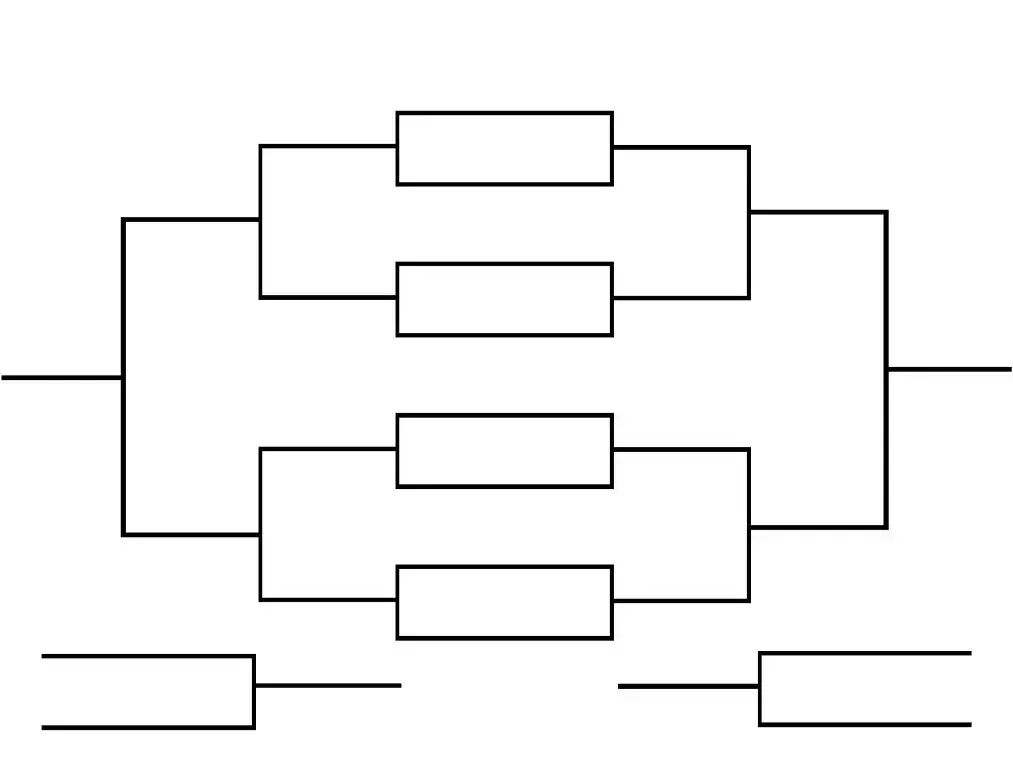What is the purpose of the Tournament Consolation Bracket form?
The Tournament Consolation Bracket form is designed to organize and track the progress of teams that do not advance in the main tournament. It allows teams to continue competing for placement, ensuring that every team has the opportunity to play additional games and improve their standings. This format promotes engagement and provides teams with valuable experience, regardless of their performance in the main bracket.
How many teams can participate in the Consolation Bracket?
The Consolation Bracket is structured to accommodate up to 8 teams. This allows for a fair competition among teams that have been eliminated from the main tournament. Each team will have the chance to compete in multiple games, ultimately vying for the title of Consolation Champion.
What are the game matchups in the Consolation Bracket?
The matchups in the Consolation Bracket are organized in a specific order. The initial games are labeled as Game 1 through Game 8, with subsequent games determining placement. For instance, the losers of Game 5 and Game 6 will compete in Game 9, while the losers of Game 7 and Game 8 will face off in Game 10. This structure ensures that teams are matched against others with similar performance levels.
How is the Consolation Champion determined?
The Consolation Champion is determined through a series of games within the Consolation Bracket. Teams will compete in their respective matchups, and the winners will advance until a final game is played. The team that wins this final game will be crowned the Consolation Champion, highlighting their success in the consolation rounds.
What placements are awarded in the Consolation Bracket?
In addition to the title of Consolation Champion, the Consolation Bracket also determines other placements, including 3rd place and 7th place. This allows teams to compete not just for the top spot but also for recognition in other positions, making the tournament experience more rewarding for all participants.
Is there a specific format for filling out the Consolation Bracket form?
Yes, the Consolation Bracket form should be filled out with clear information regarding each team's name, game results, and matchups. It is essential to keep the form updated as games progress to ensure accurate tracking of standings. Following the prescribed format helps maintain organization and clarity throughout the tournament.

